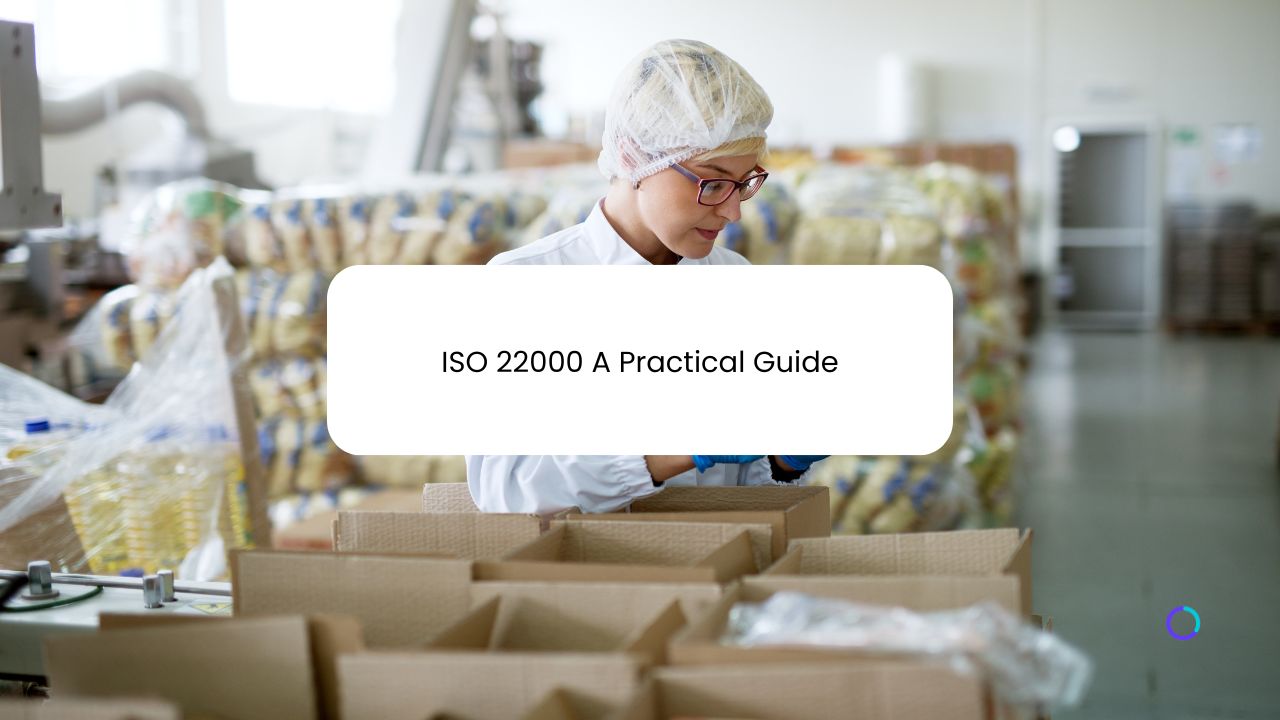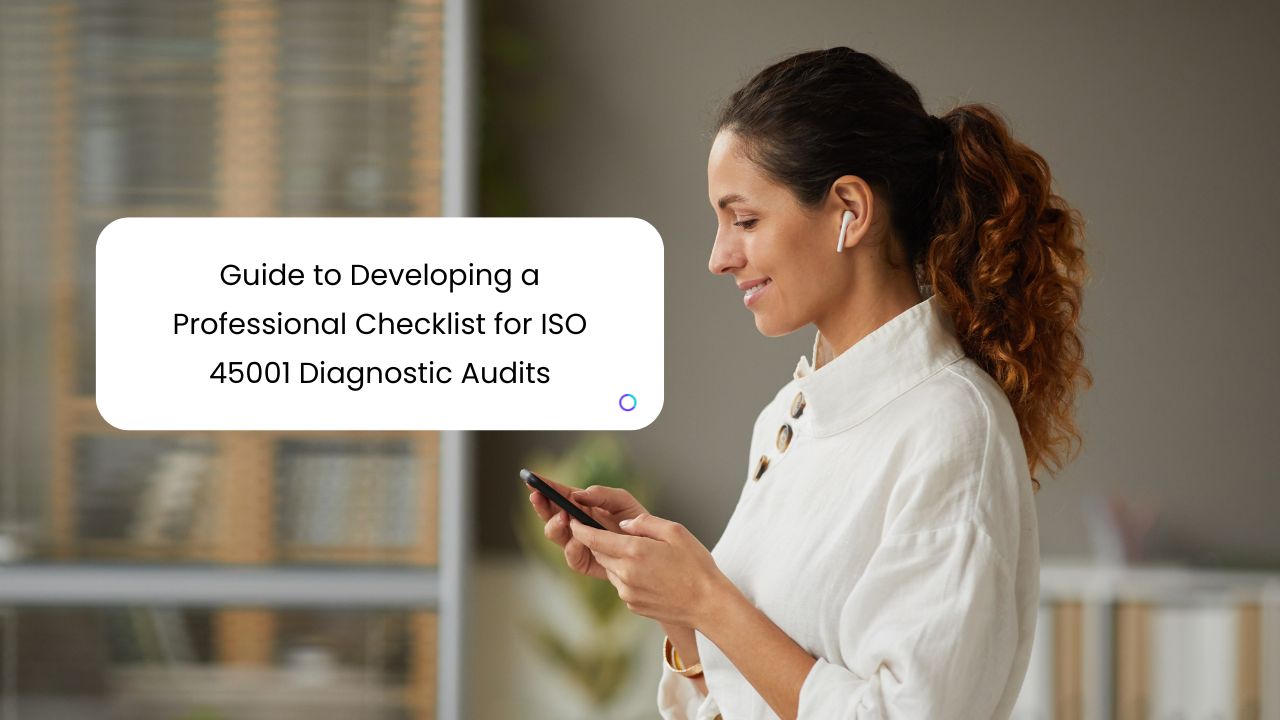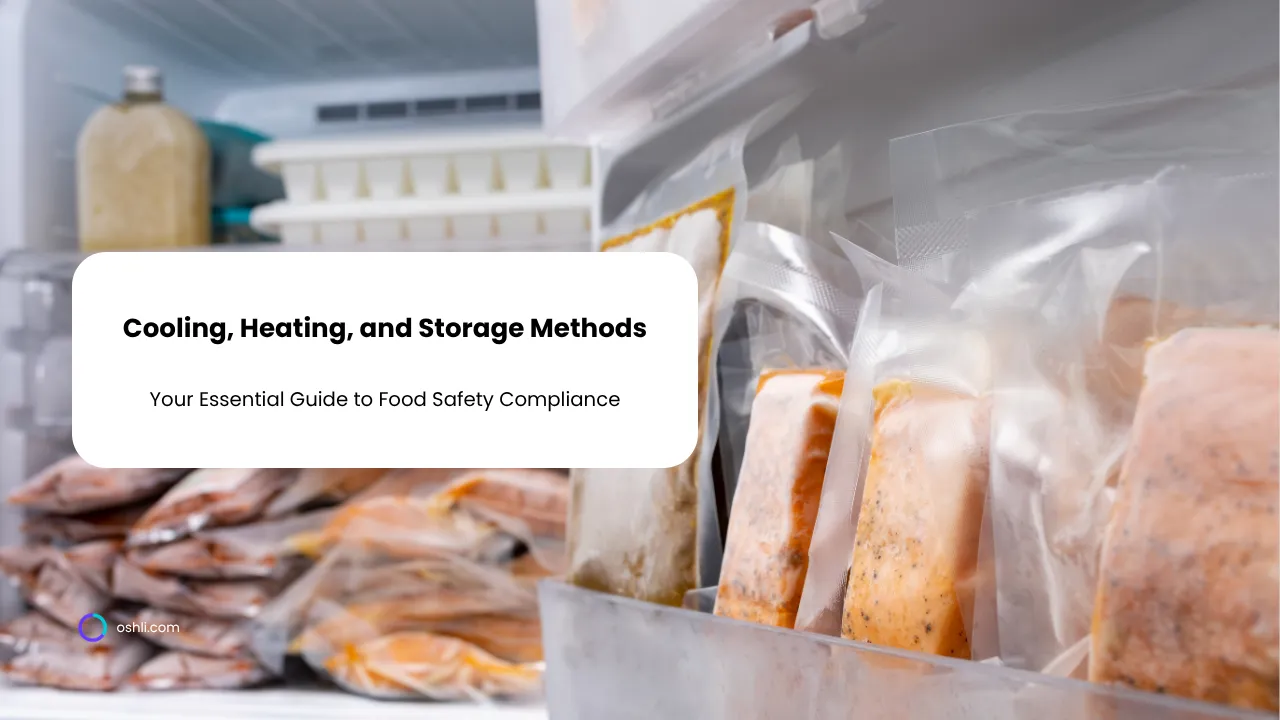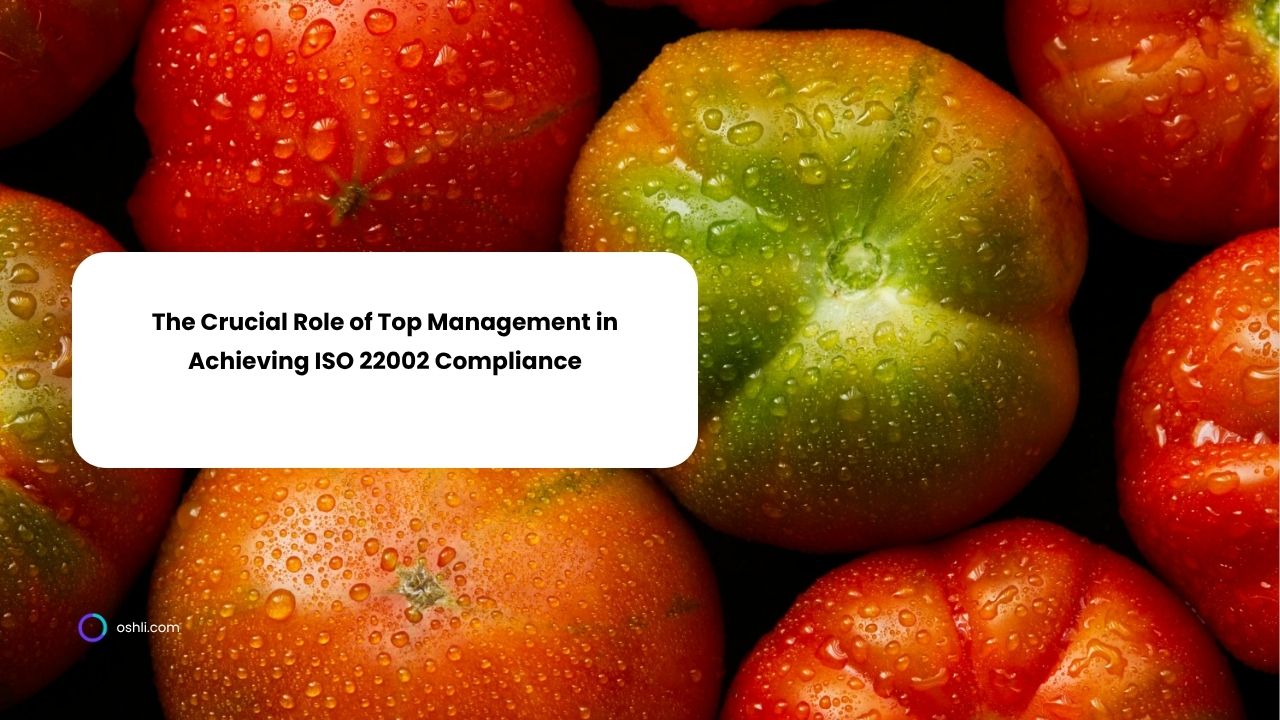
A Comprehensive Guide to ISO 22000, Audit Fundamentals, and Certification
Table of Contents
- Introduction
- Understanding the ISO 22000 Standard
- Clause 4: Context of the Organization
- Clause 5: Leadership
- Clause 6: Planning
- Clause 7: Support
- Clause 8: Operation
- Clause 9: Performance Evaluation
- Clause 10: Improvement
- Audit Fundamentals
- Document Review
- Interviews
- Physical Observation
- Testing and Sampling
- Data Analysis
- Evidence Gathering Tools
- Internal vs External Audit
- ISO 22000 Certification
- ISO 17021
- ISO 19011
- Conclusion
Introduction
In the modern global food industry, food safety has become one of the most critical concerns for businesses and consumers alike. Outbreaks of foodborne illnesses can lead to serious health consequences, massive financial losses, and irreparable damage to brand reputations. To mitigate these risks, the ISO 22000 standard provides a structured, internationally recognized framework for Food Safety Management Systems (FSMS).
Organizations aiming to comply with ISO 22000 must address a series of requirements—spanning from context analysis and leadership commitments to operation controls, audit procedures, and continuous improvement. Furthermore, to confirm adherence to the standard, organizations undergo audits performed by internal teams and external certification bodies. Understanding audit fundamentals, as well as the role of ISO 17021 and ISO 19011, is key to a smooth certification journey.
This comprehensive guide will walk you through the core elements of ISO 22000—from its clauses to the fundamentals of auditing—and clarify how certification works under the umbrella of ISO guidelines. By the end, you will have a clear roadmap to implement and maintain an effective food safety management system, ensuring consumer protection and organizational success.
Understanding the ISO 22000 Standard
ISO 22000 is built upon the High-Level Structure (HLS) used by other ISO management system standards (e.g., ISO 9001, ISO 14001). This harmonization makes it easier for organizations to integrate multiple management systems. Below is an overview of the critical clauses in ISO 22000.
Clause 4: Context of the Organization
Clause 4 sets the stage by requiring organizations to understand both the internal and external factors that can affect their food safety management system. This clause emphasizes:
-
Understanding the Organization and Its Context
Identifying social, cultural, legal, and economic conditions relevant to food safety.
Recognizing emerging trends, technological changes, and stakeholder expectations. -
Needs and Expectations of Interested Parties
Determining who the stakeholders are (e.g., customers, suppliers, regulators) and what they require.
Balancing conflicting interests to ensure the FSMS remains viable and compliant. -
Scope of the FSMS
Clearly defining boundaries: which products, processes, and facilities are included in the system.
Aligning the scope with organizational goals and regulatory requirements. -
FSMS Processes
Mapping out the processes involved in delivering safe food, from raw materials to end-product distribution.
Understanding the interactions among different processes to identify potential risks and synergies.
Clause 5: Leadership
Effective leadership is the cornerstone of a successful FSMS. Clause 5 demands:
-
Commitment and Responsibility
Top management must demonstrate a commitment to food safety, providing the necessary resources and support.
Leadership should integrate the FSMS into the organization’s strategic direction. -
Policy Development
A food safety policy that aligns with the organization’s overall mission and objectives.
The policy should be clearly communicated, understood, and implemented at all levels. -
Roles, Responsibilities, and Authorities
Clearly defining who is responsible for each FSMS element.
Empowering teams with the authority to take action when food safety risks arise.
Clause 6: Planning
Clause 6 addresses the proactive side of management systems:
-
Actions to Address Risks and Opportunities
Identifying potential events or conditions that could impact food safety.
Planning measures to mitigate negative outcomes (risks) and capitalize on positive opportunities. -
Food Safety Objectives
Setting SMART (Specific, Measurable, Achievable, Relevant, Time-bound) objectives.
Aligning objectives with the overall policy and ensuring they support continuous improvement. -
Planning Changes
Establishing protocols to manage changes (e.g., new equipment, processes, or products) without compromising food safety.
Clause 7: Support
Without adequate support, even the best plans can fail. Clause 7 outlines:
-
Resources
Ensuring sufficient human, financial, infrastructural, and technological resources are available.
Evaluating external providers or suppliers that could affect the FSMS. -
Competence
Hiring qualified personnel and providing ongoing training.
Evaluating staff performance to maintain and improve competencies. -
Awareness
Ensuring employees understand their roles, the importance of food safety, and the implications of non-conformities. -
Communication
Establishing internal and external communication strategies for sharing FSMS-related information.
Tailoring communication to specific audiences (e.g., staff, suppliers, customers, regulators). -
Documented Information
Controlling documents and records to ensure data integrity.
Storing and retrieving information securely for audits and decision-making.
Clause 8: Operation
Clause 8 delves into the operational aspects of implementing a robust FSMS:
-
Operational Planning and Control
Managing processes according to documented procedures.
Ensuring that critical parameters (e.g., temperature, pH) are monitored and maintained. -
Prerequisite Programs (PRPs)
Basic hygiene practices, equipment maintenance, and pest control.
Creating a foundational environment that supports food safety. -
Hazard Control
Conducting Hazard Analysis to identify biological, chemical, and physical risks.
Establishing Operational Prerequisite Programs (OPRPs) and Critical Control Points (CCPs) where necessary. -
Traceability System
Tracking raw materials, intermediate products, and finished goods.
Facilitating recalls or withdrawals if hazards are identified post-production. -
Emergency Preparedness and Response
Developing contingency plans for crises (e.g., contamination events, natural disasters). -
Control of Outsourced Processes
Ensuring third-party services (e.g., transport, storage) also meet FSMS requirements.
Clause 9: Performance Evaluation
After planning and execution, performance evaluation is crucial:
-
Monitoring, Measurement, Analysis, and Evaluation
Setting performance indicators (e.g., rate of non-conformities, customer complaints).
Regularly measuring progress toward food safety objectives. -
Internal Audits
Periodic checks to confirm compliance with ISO 22000 and internal standards.
Identifying non-conformities and areas for improvement. -
Management Review
Top management reviews audit results, performance metrics, and stakeholder feedback.
Making strategic decisions to refine or overhaul the FSMS.
Clause 10: Improvement
Finally, Clause 10 focuses on continual improvement:
-
Nonconformity and Corrective Action
Defining procedures to address deviations or incidents (e.g., product recalls).
Conducting root-cause analysis to prevent recurrence. -
Continual Improvement
Using performance data, audit findings, and feedback to enhance processes.
Fostering a culture of proactive problem-solving and innovation. -
Updating the FSMS
Revisiting the entire system in light of new technologies, scientific discoveries, or regulatory changes.
Audit Fundamentals
Audits are systematic, independent evaluations of how well an organization’s food safety management system meets ISO 22000 requirements. Understanding audit fundamentals is essential for maintaining certification and continually improving the FSMS.
Document Review
Document review is typically the first step in an audit. The auditor examines:
- Policies and Procedures: Ensuring they align with ISO 22000 clauses.
- Process Flow Diagrams: Verifying completeness and accuracy.
- Records: Checking evidence of consistent implementation (e.g., temperature logs, cleaning schedules).
Effective document control ensures that all documents are up to date, accessible, and authorized by the right personnel. Poor documentation can lead to misunderstandings, non-conformities, and a lack of traceability.
Interviews
Interviews allow auditors to gauge the depth of understanding and engagement among employees:
- Top Management: Can articulate the food safety policy, objectives, and strategic direction.
- Supervisors and Operators: Understand their responsibilities, critical control points, and corrective actions.
- Support Staff: Grasp the importance of their roles (e.g., procurement ensuring safe supplier selection).
Interview questions often explore how well employees can handle emergencies, identify hazards, and follow SOPs (Standard Operating Procedures).
Physical Observation
Physical observation is where auditors tour the facility to:
- Check Cleanliness and Hygiene: Confirm compliance with prerequisite programs (e.g., handwashing stations, protective clothing).
- Evaluate Process Flows: Identify any layout issues that could lead to cross-contamination.
- Assess Equipment Condition: Verify calibration, maintenance records, and operational safety.
Observing real-time operations can reveal inconsistencies between documented procedures and actual practices.
Testing and Sampling
In some audits, testing and sampling are performed to:
- Verify Product Safety: Microbiological or chemical tests on samples.
- Check Process Parameters: Calibration checks on thermometers, pH meters, or scales.
- Confirm Allergen Controls: Swab tests for allergen residues in cleaning procedures.
Testing can be done internally or by third-party laboratories, depending on the audit scope and requirements.
Data Analysis
Auditors analyze data from various sources—records, test results, and performance indicators—to:
- Identify Trends: Rising microbial counts or recurring equipment failures could indicate systemic issues.
- Evaluate Process Capability: Statistical process control (SPC) can help determine if a process is stable and predictable.
- Benchmark Performance: Comparing metrics against industry standards or previous audits.
Evidence Gathering Tools
Common evidence gathering tools include:
- Checklists: Standardized forms to ensure all audit points are covered.
- Audit Software: Digital platforms that streamline record collection, scheduling, and reporting.
- Photographs and Videos: Visual evidence of non-conformities or best practices.
The goal is to gather objective evidence to support audit findings, leading to well-grounded conclusions.
Internal vs External Audit
Internal Audits: Conducted by the organization’s own trained staff or by an internal audit department.
- Purpose: Identify improvement opportunities and ensure ongoing compliance.
- Frequency: Often scheduled more frequently than external audits (e.g., quarterly, semi-annually).
External Audits: Performed by certification bodies or regulatory agencies.
- Purpose: Provide an unbiased assessment, leading to certification or regulatory approval.
- Frequency: Typically annual or biennial for surveillance audits, with full re-certification every 3 years.
Internal Audit
An internal audit is a vital component of Clause 9 (Performance Evaluation). It helps organizations:
- Prepare for External Audits: Identifying and correcting non-conformities before a certification body arrives.
- Promote a Culture of Continuous Improvement: Empowering employees to contribute ideas and solutions.
- Enhance Communication: Auditors often discover cross-departmental issues that require coordinated actions.
Organizations should develop a risk-based audit plan, focusing on high-risk processes or areas with known compliance challenges.
ISO 22000 Certification
ISO 22000 certification is the formal recognition that an organization’s FSMS meets all requirements of the ISO 22000 standard. Achieving and maintaining certification can bolster consumer confidence, open new market opportunities, and demonstrate a commitment to food safety.
ISO 17021
ISO 17021 outlines the requirements for certification bodies that provide audits and certifications of management systems. Key points include:
-
Impartiality
Certification bodies must avoid conflicts of interest.
Auditors must remain neutral and base conclusions solely on objective evidence. -
Competence
Auditors must have the required expertise in food safety, the ISO 22000 standard, and auditing practices.
Ongoing training ensures auditors remain current with emerging industry trends. -
Consistency
Certification bodies should have standardized processes for conducting audits and issuing certificates.
Regular internal reviews ensure consistent interpretation of ISO 22000 requirements. -
Transparency
Certification procedures, fees, and criteria should be clear to clients.
Non-conformities and the rationale for certification decisions must be documented.
ISO 19011
ISO 19011 provides guidelines for auditing management systems. Although it is not specific to ISO 22000, it is widely used as a reference for food safety audits. Core aspects of ISO 19011 include:
-
Audit Principles
Integrity: Conducting audits with honesty and responsibility.
Fair Presentation: Reporting findings accurately and truthfully.
Due Professional Care: Exercising diligence and judgment during audits. -
Managing an Audit Program
Establishing objectives and scope.
Assigning resources and timelines. -
Audit Activities
Planning: Reviewing past audit reports, identifying high-risk areas.
Execution: Conducting interviews, observations, and data analysis.
Reporting: Summarizing findings, categorizing non-conformities, and making recommendations. -
Competence and Evaluation of Auditors
Defining auditor qualifications (knowledge, skills, experience).
Continuously assessing auditor performance and improving training.
By aligning with ISO 17021 and ISO 19011, certification bodies ensure a fair, consistent, and competent process for ISO 22000 certifications. Organizations, in turn, benefit from reliable audits that genuinely enhance food safety management.
Conclusion
The journey to ISO 22000 certification begins with understanding the standard’s requirements—from context analysis and leadership to risk-based planning, operational controls, performance evaluation, and continual improvement. A robust Food Safety Management System is not merely a collection of documents; it is a living framework that aligns with the organization’s strategic goals and day-to-day operations.
Central to maintaining a high level of food safety are the audit fundamentals—document review, interviews, observations, testing, sampling, and data analysis—carried out by internal and external auditors. Complying with ISO 17021 ensures certification bodies operate with competence and impartiality, while ISO 19011 offers guidance on the principles and procedures for effective auditing.
Achieving ISO 22000 certification is both a milestone and a stepping stone. It demonstrates to customers, regulators, and the public that your organization prioritizes food safety, but it also sets the stage for continuous improvement. By routinely assessing risks, revisiting objectives, and leveraging audit findings, organizations can stay ahead of emerging threats, adapt to market changes, and maintain consumer trust.
Key Takeaways
- Clause 4–10 of ISO 22000 form a comprehensive roadmap for an FSMS, addressing context, leadership, planning, support, operations, performance evaluation, and improvement.
- Audit fundamentals—from document review to data analysis—provide the structure for assessing system effectiveness and compliance.
- ISO 17021 ensures certification bodies maintain high standards of competence and impartiality.
- ISO 19011 guides organizations and auditors on how to conduct reliable, systematic audits.
- Continual improvement is not just a requirement; it is a strategic advantage in a highly competitive and regulated industry.
By embedding these principles into everyday practice, your organization will not only achieve ISO 22000 certification but also foster a proactive culture that values food safety as a cornerstone of success.
Join our newsletter!
Enter your email to receive our latest news.
Don't worry, we don't spam
Related Articles

Guide to Developing a Professional Checklist for ISO 45001 Diagnostic Audits
The ISO 45001 standard establishes a framework for Occupational Health and Safety Management Systems (OHSMS), aiming to enhance employee safety, reduce workplace risks, and create safer working conditions. A diagnostic audit aligned with ISO 45001 is a proactive approach that allows organizations to assess current compliance, identify weaknesses, and prioritize improvements. Central to this process is a professionally structured checklist that ensures consistency, accuracy, and depth in audit execution.

Cooling, Heating, and Storage Methods: Your Essential Guide
Discover how to create a cooling, heating, and storage methods template to ensure food safety, meet compliance, and optimize temperature control with free templates.

The Crucial Role of Top Management in Achieving ISO 22002 Compliance
Explore how top management's leadership drives ISO 22002 compliance, ensuring robust food safety management through commitment, policy, and oversight.


